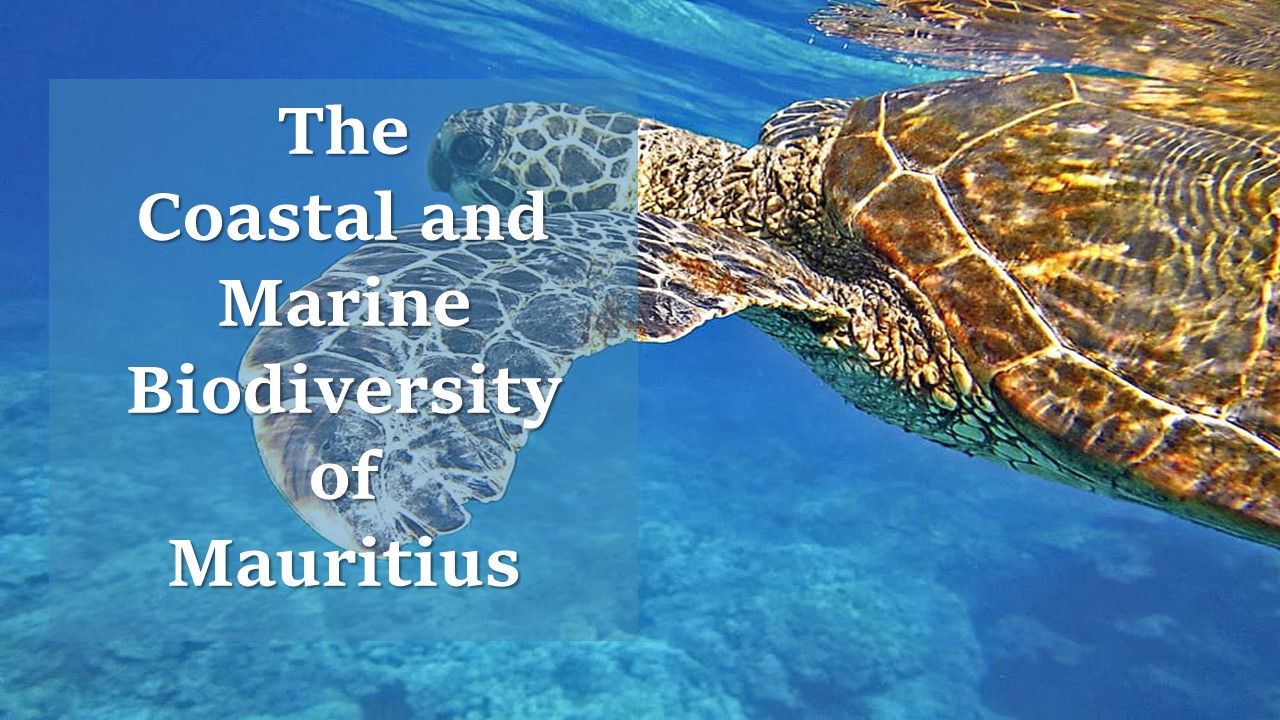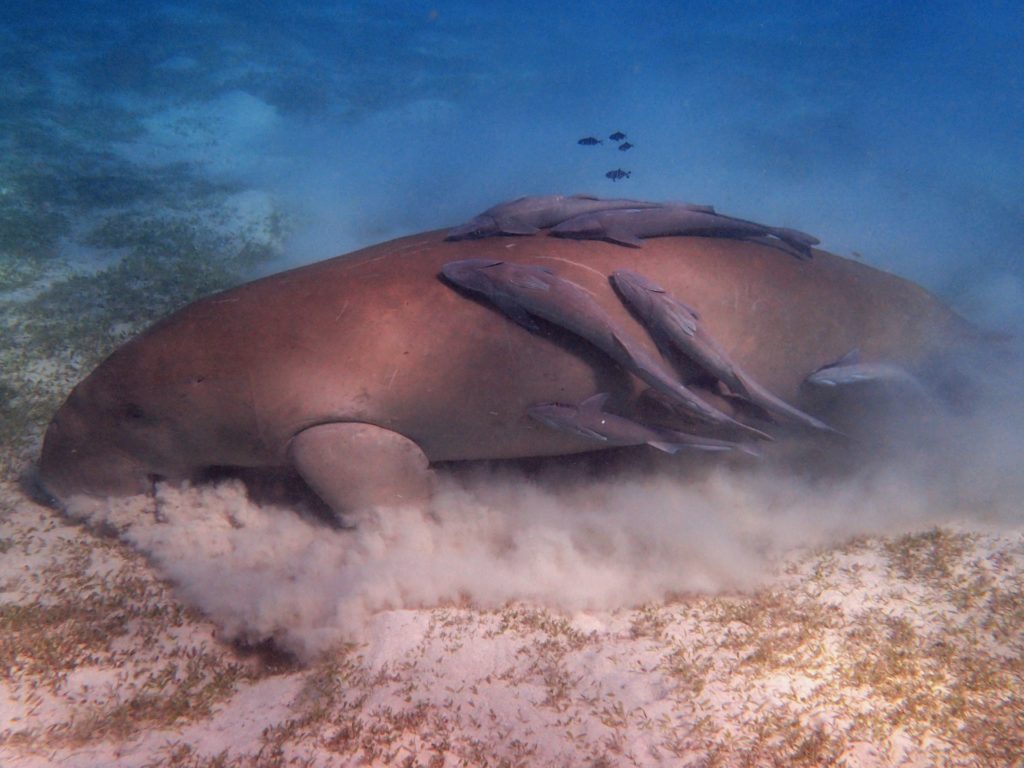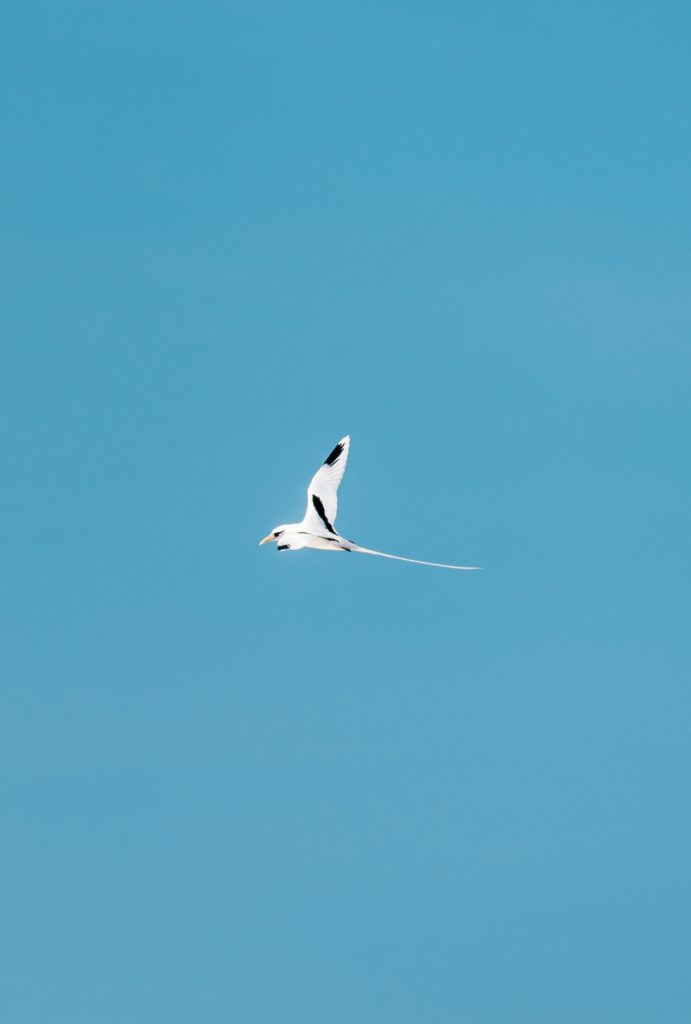Coastal and Marine Biodiversity of Mauritius

Mauritius island is just a small volcanic dot in the Indian ocean, yet its legal coastal waters are more than 1000 times its terrestrial size. Basically, the island has a land area of 2,040 km2 and an Exclusive Economic Zone of 2.3 million km2 including 400,000 km2 jointly managed with Seychelles.
This is because the territory of Mauritius extends over its dependencies and cover their coastal waters as well. Though the marine zone is quite rich, 99% is still unexplored. Nonetheless, researchers have thoroughly studied the coastal and marine biodiversity thus revealing several important species in the Mauritian waters.
Coastal biodiversity of Mauritius
Coastal biodiversity refers to the plants and animals that live in the coastal zone. The coastal zone here represents the interface between the land and sea. It includes several sub-zones such as river estuaries, wetlands, beaches, islands, intertidal regions and salt marshes. The most important marine ecosystems on Mauritius are the mangroves, seagrass beds and coral reefs.
Wetlands particularly mangrove forests
Wetlands that appear on the coastal zone are mangrove forests, estuaries, marine coasts and marshes. Among these, mangroves are the most important element covering an area of 0.49 km2.
Basically, two species of mangroves grow on the coast: the red mangrove (Rhizophora mucronata) and the black mangrove (Bruguiera gymnorhiza). The red mangrove is the dominant species and is easily recognized by its stilt roots.
Plants that grow in the wetlands are mainly the golden leather fern (Acrostichum aureum) and the common bulrush/cattail (Typha latifolia). To date, there has been no inventory on the animal species that inhabit the mangroves of Mauritius. Broadly speaking, commonly encountered creatures are juvenile fish, crabs, birds, stray cats and a plethora of insects.
Seagrass beds
Seagrasses are flowering plants that have adapted to live underwater. They often form extensive meadows and have important ecological functions especially in terms of their blue carbon potential.
Basically, 13 species of seagrasses exist in the Western Indian Ocean. But there is a lack of knowledge on their species composition and density around Mauritius. Some of the species identified include the Narrowleaf seagrass (Halodule uninervis), the Halophila seagrass (Halophila stipulacea), the Spoon grass (Halophila ovalis) and the Noodle seagrass (Syringodium isoetifolium).
Coral reefs
Five types of coral reefs are found around Mauritius namely fringing reefs, atolls, patch reefs, reef flats and barrier reefs. Moreover, researchers recorded more than 160 coral species.
In general, coral reefs form a 150 km protective layer around Mauritius. There are a few gaps at river mouths and on the southern coast.
Coral reefs are ecologically and economically important to Mauritius. For instance, by breaking open sea waves, they permit a calm lagoon to form which is crucial for the tourism industry. Nevertheless, the crown of thorn starfish frequently preys on corals thus preventing their regeneration.
Marine biodiversity of Mauritius
Broadly speaking, 1656 marine species actually live in the waters of Mauritius. This includes species of crabs (4), shrimps (7), lobsters (2), bristle worms (polychaetes), bivalves (e.g. mussels, oysters, clams), isopods, octopus, molluscs and sea cucumbers.
Fish species in Mauritius
In general, there are 340 fish species; out of this, 42 species within the lagoon are economically important. Some fish species endemic to Mauritius are the Mauritius dragonet (Callionymus mascarenus), Smith’s Dottyback (Chlidichthys smithae) and the moray eel (Gymnothorax sagenodeta).
Moreover, deep-sea fishing is also an important recreational and economic activity for big game enthusiasts. Common species found outside the lagoon of Mauritius are the Pacific Blue Marlin, the Sailfish, the Dorado and the Yellow Fin Tuna.
Marine mammals often sighted
To date, some 17 marine mammal species frequently enjoy the water around Mauritius. Thus, we often see dolphins, whales, sea lions, dugongs and seals on boat trips. For the most part, they descend from the cold Antarctic waters to the warm tropical waters for calving.
Amongst these, dolphins are the most common species that live in the waters of Mauritius. Whales, sea lions and seals make an appearance every now and then. Sadly though, we can now very rarely see dugongs as they are subject to predation and hunting pressure.

Image by Hans Dietmann from Pixabay
Marine turtles on Saint Brandon and Agalega
2 species of marine turtles thrive in the Mauritian waters: the hawksbill turtle (Eretmochelys imbricate) and the green turtle (Chelonia mydas). While they feed in the seagrass beds around Mauritius, Saint Brandon and Agalega, they nest only on Saint Brandon and Agalega.
People exploited both of these turtle species in the past for meat, eggs and leather. So, today, the Fisheries and Marine Resources Act protect these creatures.
Common Marine birds on Mauritius and Rodrigues
There is very little information on the marine birds of Mauritius. As it stands, researchers mainly monitor marine birds at the Rivulet Terre Rouge Estuary Bird Sanctuary (RTREBS) and the offshore islets around Mauritius and Rodrigues.
At the RTREBS some 1200 bird species migrate from the northern hemisphere during the harsh winters to the warm climate of Mauritius. Common migrant birds are the common Sandpiper, the Little Ringed Plover and the Grey Plover.
Nevertheless, the offshore islets like Gunners Quoin, Round Island and Flat Island shelter most of the marine birds by far. Thus, quite often, you can catch a glimpse of white-tailed tropicbirds, red-tailed tropicbirds or Bulwer’s Petrel fly over these islands.
In addition to these, several marine birds also live on the islets of Rodrigues. Some of them are the Lesser Noddy, the Sooty Tern, the Fairy Tern and the Roseate Tern.

Photo by Rayyu Maldives photographer on Unsplash
Threats to the coastal and marine biodiversity
As a rapidly developing small island state, the main threats to coastal and marine biodiversity relate to development activities. People filled many wetland sites and cleared large expanses of mangrove forest for construction purposes. What’s more, hard structures on beaches coupled with unsustainable development has increased erosion rates in many regions.
As it follows, land-based and coastal activities inevitably lead to pollution that degrades the coastal environment. High levels of chemicals encourage eutrophication thus choking plants and animals under algal blooms. Moreover, certain invasive alien species such as the Crown of thorn starfish impact on the lifecycle and reproduction stages of marine creatures.
In the past, destructive fishing practices also caused a lot of damage to the marine ecosystem although today this has stopped.
Nonetheless, one of the most imminent challenges today is climate change-related sea-level rise. As it is, the sea level has already risen in many places resulting in erosion, higher tides and further inland crashing of waves.
Management of marine biodiversity
Since Mauritius is highly dependent on its marine assets, different institutions play important roles in managing, monitoring and conserving these resources. The Mauritius Oceanography Institute has embarked on many projects such as coral farming and monitoring at various sites of the island to keep track of the status of coral reefs.
The Fisheries Division also frequently sample coastal waters to ensure pollution levels are kept low. Furthermore, the Mauritius Research Council encourages marine research including seaweed farming to tap into scientific research on coastal resources.
Also, Environmental Impact Assessments are required to initiate development in wetlands while Environmentally Sensitive Areas (ESAs) are protected in the Outline Planning Schemes.
Marine protected areas of Mauritius
In order to protect the marine biodiversity and conserve marine resources, several marine protected areas exist in the waters of the Republic of Mauritius.
So far, there are 2 marine parks namely the Blue Bay Marine Park (3.53 km2) which is also a Ramsar site of international importance and the Balaclava Marine Park (4.85 km2). In addition to that, 6 Fishing Reserves, 5 Fisheries Reserved Areas, 4 Marine Reserves and a multiple Marine Protected area in the south-east of Rodrigues are managed.

Pingback: Green insurance: Meaning, Products, Benefits - Yo Nature
Pingback: Coral reefs of Mauritius: Types, Importance, Threats - Yo Nature
Pingback: Offshore islets of Mauritius: National Parks and Nature Reserves - Yo Nature